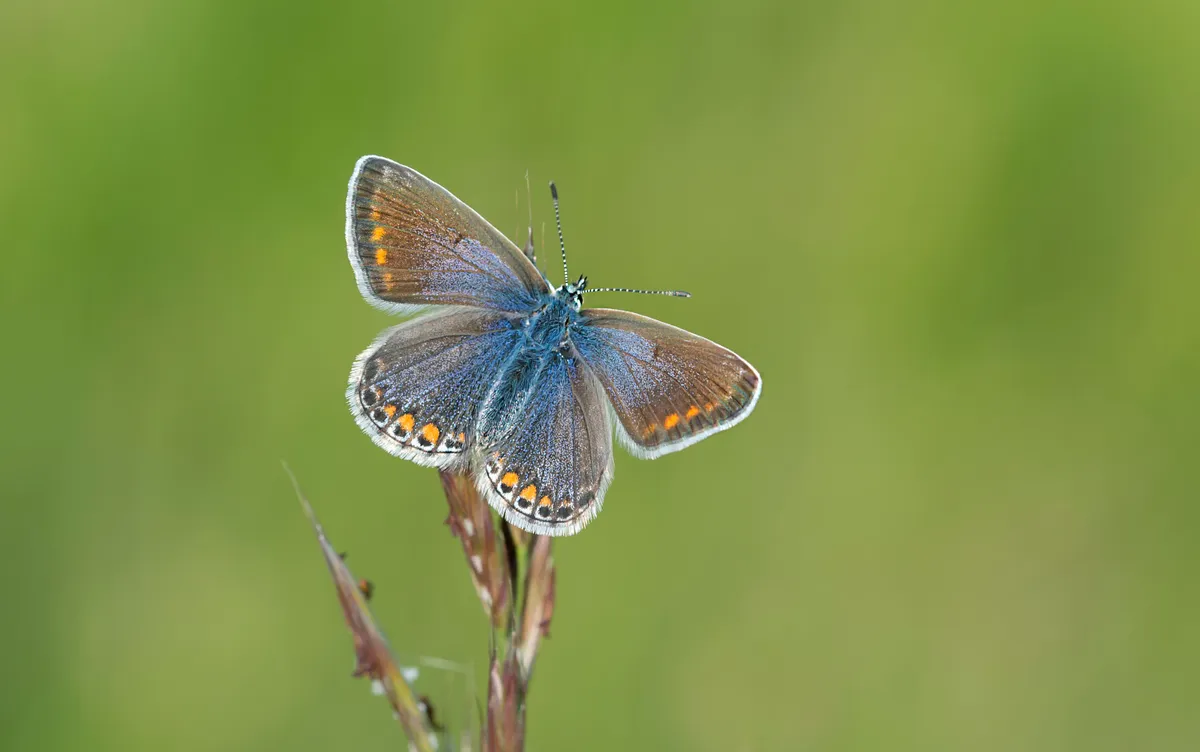Common blue butterflies increased by 104% during last year’s summer heatwave, and experts hope the hot weather will see numbers continue to rise.
The common blue species, which is the UK’s most widespread type of blue butterfly, is set to appear in record-breaking numbers this August following Met Office forecasts for high temperatures, says wildlife charity the Butterfly Conservation.
Butterfly Conservation’s Senior Surveys Officer, Dr Zoe Randle, said: "In England last year, the butterfly’s numbers were up 110% from 2017 and in Wales their numbers were up 94% for the same period. However, numbers of the first brood which emerged in June were slightly down on last year, so it will be interesting to see how the second brood emerging in August will respond to the heatwave.
"It would really help us if people could get outside and look for this butterfly, so we can see if its fortunes really have turned around or if the common blue still needs our help."

What does the common blue butterfly look like and where are they found?
The common blue butterfly has bright blue upper wings that are either unmarked or marked with orange crescents, depending on the sex of the butterfly. Their underwings have white and black spots.
The species is not usually found in gardens but grasslands and sand dunes. It favours sunny sheltered spots, and is sometimes spotted in urban spaces.
How can I get involved?
Visitors to National Parks are being encouraged to note any sightings of the butterfly during visits this year, and record their findings with the Big Butterfly Count.
Corinne Pluchino, Chief Executive of Campaign for National Parks said: “This is a great opportunity to help chart the progress of this beautiful blue butterfly and we’d love to know where our top Common Blue colonies are.
“We’d also like to have a better idea of the other butterfly species our sites are supporting, so please let us know what you find.”
